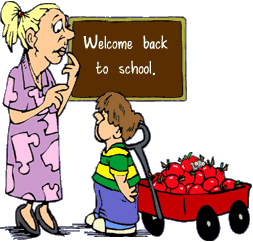
Sex education in schools has a few major topics that cause controversy, such as whether or not the subject should be taught within the school’s curriculum, what should be taught, and how the subject should be taught. The reason these topics cause such major controversy is the individual’s beliefs. Every person in the world has their own ideas, thoughts and beliefs about sex education in schools. With all the different types of people in the world how do they all come together to make the decision on whether or not to have sex education in their schools, what should be taught, and how the subject should be taught? In the article Facts on Sex Education in the United States found at the web address provides
http://www.guttmacher.org/pubs/fb_sexEd2006.html key facts on why sex education should be taught in schools, what should be taught about sex education, and how sex education should be taught.
One key fact that is made at the beginning of this article is that “Of the approximately 750,000 teen pregnancies that occur each year, 82% are unintended. More than one-quarter end in abortion.” (Guttmacher Institute) Provided that sex education was available to these teens they possible would have been more informed of the consequences of their actions and thought out their actions more clearly. Another key fact that this article provides “by 2002, one-third of teens had not received any formal instruction about contraception.”(Lindberg LD) This means that the teens’ parents did not provide any information about how to stop pregnancy and the available options that the teens’ can look into if they decide to be sexually active. This fact might also be a reason for deciding weather or not sex education should be taught within a school’s curriculum.
Once a school has decided to have sex education in their curriculum, the next step is what should be taught. Some schools only teach abstinence and others teach both abstinence and conception. In the article “Only one-third of adults surveyed support abstinence-only education, while half oppose the abstinence-only approach"(Ibid.) Even though adults are a major factor on what should and shouldn’t be taught about sex education teachers are important in that decision too. “One in five teachers believe that restrictions on sex education are preventing them from meeting their students’ needs.”(Ibid) The article also says that teachers don’t always meet the standard of what they believe should be taught compared to what they really teach.
How sex education should be taught is up to the school district itself and the teacher. More states are becoming involved with having sex education taught within their school. Up to 35 states are requiring sex education or an education about STDS and AIDS. (Guttmacher Institute) With more states involved in sex education the government also has its own input on the subject. There is a federal law that provides a strict definition of “abstinence-only education” this makes it mandatory for programs to teach that any sexual activity before marriage is wrong for any age group, talk of conception besides showing the failures of conception. (Dailard C) All together the article shows that there are many different views on sex education, and what should be taught and the results of teens not having the information of the knowledge of sex and its consequences, use of conception and the health risk.









